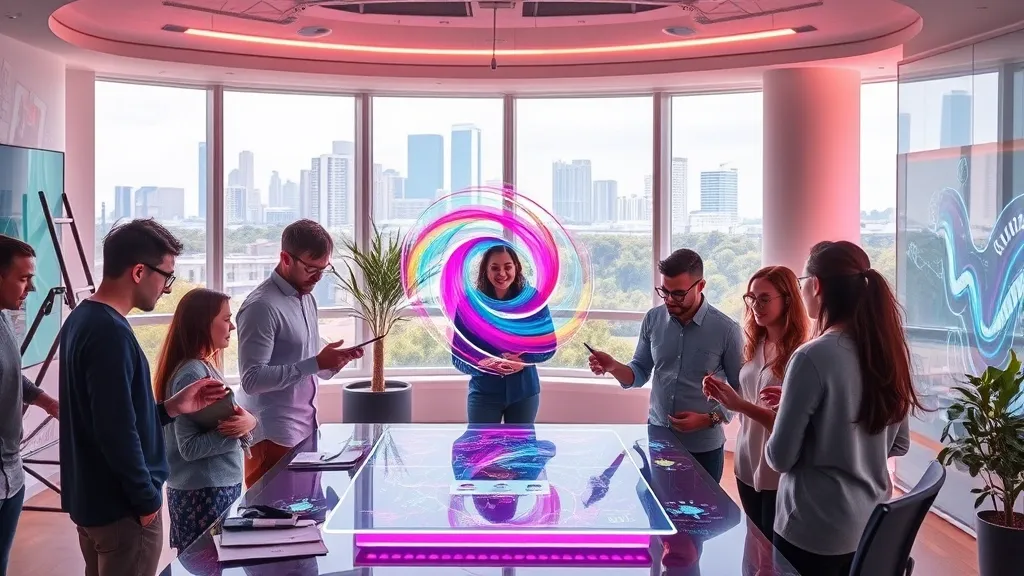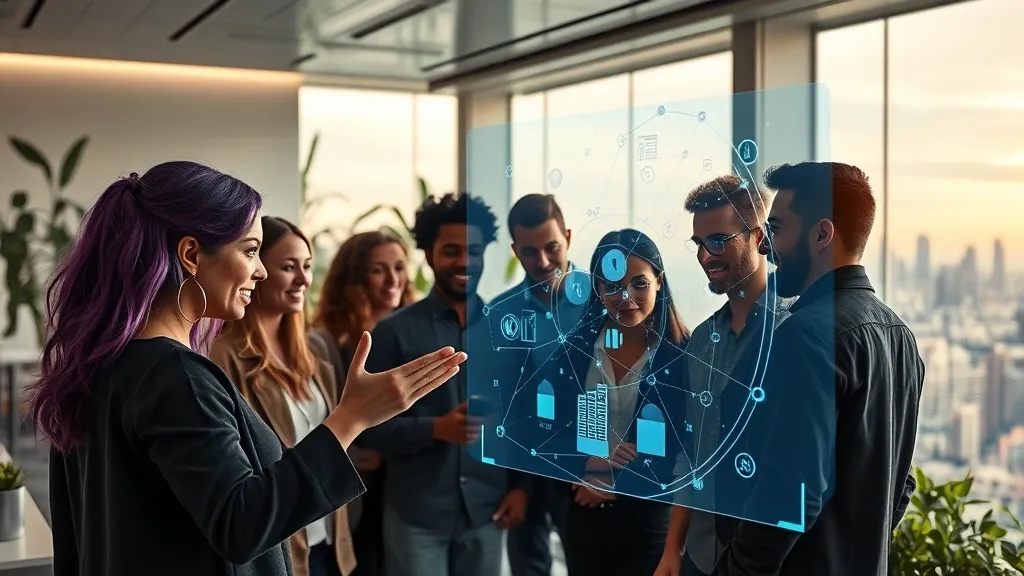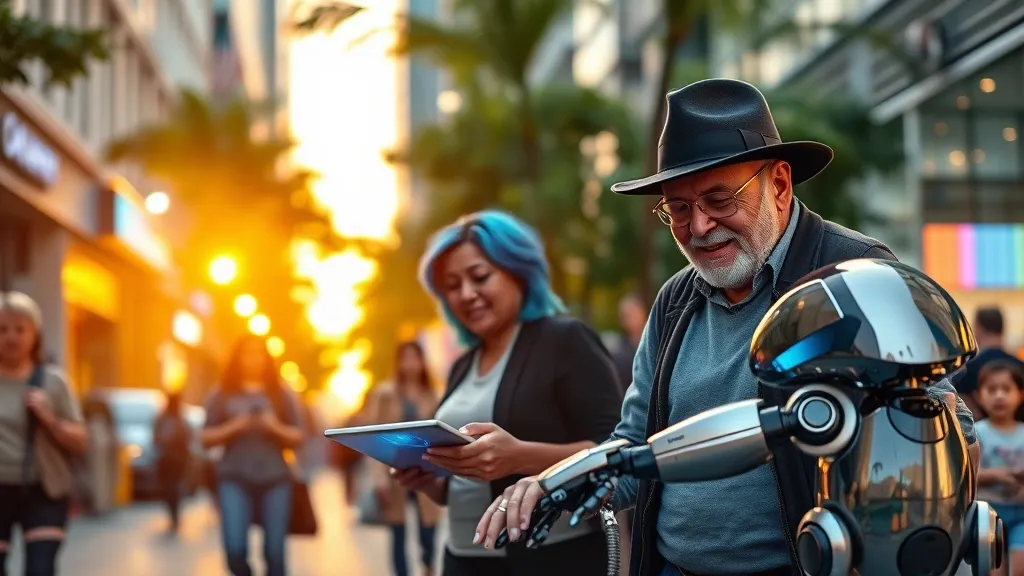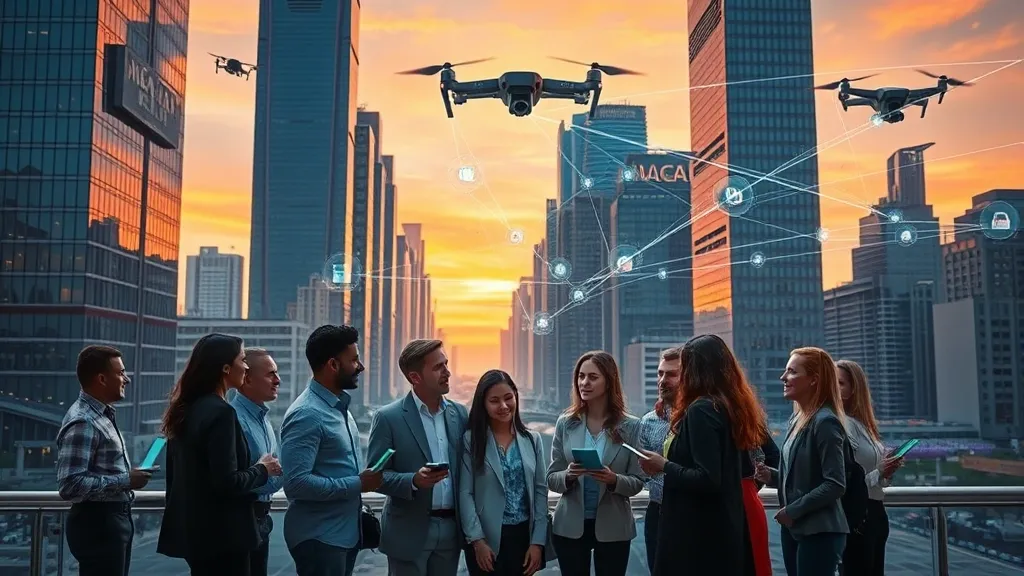Pixels with Personality: The Rise of AI-Driven Design
So, here’s the thing about design these days: it’s getting a serious upgrade. I mean, we’ve all seen how AI is creeping into pretty much every corner of our lives, right? From chatbots that help us shop (and sometimes make us laugh with their awkwardness) to those apps that can generate art in seconds, it’s like we’re living in a sci-fi movie. But let’s chat about the real star of the show—AI-driven design.
Gone are the days when designers were slaving away for hours, adjusting pixels like they were some kind of digital artisans. Now, AI tools are stepping in to take on some of that heavy lifting. Imagine being able to whip up a design in a fraction of the time it used to take. Sounds like a dream, doesn’t it? And honestly, who wouldn’t want to spend more time sipping coffee and less time staring at a screen?
But it’s not just about speed. AI can actually help create designs that are more personalized and engaging. Think about it: algorithms can analyze user behavior, preferences, and even emotions to craft visuals that resonate on a deeper level. It’s like having a design buddy who knows you inside and out (without the awkward small talk, of course).
- Dynamic Content: Designs that change based on who’s looking at them? Yes, please!
- Color Trends: AI can spot color trends faster than you can say “millennial pink.”
- Accessibility: Not only will designs look good, but they can also be optimized for everyone, making the digital world a bit more inclusive.
Now, I gotta admit—there’s a bit of a worry here, too. Are we gonna lose that human touch in design? I mean, can a bot really understand the emotion behind a piece? It’s like asking if a toaster can appreciate a good slice of bread. Sure, it can toast it, but can it savor the flavor? I guess we’ll have to find a balance.
In 2025, I’m betting we’ll see a blend of human creativity and AI efficiency that’ll blow our minds. Designers won’t just be using these tools; they’ll be collaborating with them, kind of like a buddy cop movie, but with fewer explosions and more color palettes. So, buckle up! The future of design is looking bright, and I can’t wait to see what we whip up together.
Beyond the Canvas: Immersive Realities Transforming Visual Storytelling
Alright, so let’s talk about what’s happening beyond the good old canvas. You know, the one where we’ve all spent countless hours trying to make our stick figures look like actual humans? Yeah, that canvas is still cool, but there’s a whole new world out there, thanks to immersive technologies like virtual reality (VR) and augmented reality (AR). Seriously, these techs are flipping the script on how we tell stories through visuals.
Imagine this: instead of just staring at a painting or a digital artwork, you can actually step inside it. I mean, who wouldn’t want to wander around in a Van Gogh painting or dodge flying dinosaurs in a Jurassic Park scene? With VR, artists can create entire worlds that people can explore. It’s like being the star of your own interactive movie, and honestly, it sounds way more fun than just scrolling through social media for the hundredth time.
But it’s not all just about escapism. AR is sneaking into our daily lives, too. You’ve probably seen those apps that let you place furniture in your living room before you buy it. That’s just the tip of the iceberg! Imagine visiting a museum where you can point your phone at a painting and get a 3D animation of the story behind it. It’s like having a personal tour guide in your pocket. Pretty neat, right?
Now, let’s not forget about the storytellers themselves. Artists and creators can use these tools to push boundaries and express ideas in ways we never thought possible. The blending of art and technology could lead to new genres of storytelling, where the audience isn’t just a passive observer but an active participant. Talk about leveling up!
- Immersive experiences: They engage the audience like never before.
- Interactive storytelling: You’re not just reading a story; you’re living it.
- New artistic expressions: Artists can experiment with dimensions and narratives.
So, what does this all mean for the future? Well, as we roll into 2025 and beyond, we’ll likely see even more creative minds diving into this immersive realm. Who knows? Maybe we’ll all be taking art classes in virtual reality, learning how to paint with digital brushes while floating in a zero-gravity art studio. Okay, maybe that’s a bit far-fetched, but you get the idea. The future of visual storytelling is looking bright, and I, for one, can’t wait to see where it goes!
Collaborative Creations: How Technology is Democratizing Artistry
You know, it’s kinda wild how technology’s been shaking things up in the art world. I mean, just think about it—back in the day, if you wanted to create something, you usually needed a ton of expensive tools or a fancy degree. But now? It feels like anyone with a smartphone and a pinch of creativity can dive in. It’s like art is throwing a big party, and everyone’s invited!
Platforms like Instagram and TikTok have turned everyday folks into art critics and creators. The way we share and collaborate with each other has changed completely. You can hop on an app and find a group of fellow artists, no matter where they are. They might be across the globe, sipping coffee in a café in Paris while you’re chilling at home in your PJs. And boom! You’re creating together, bouncing ideas off each other like it’s the most natural thing in the world.
- Accessibility: Tools like Procreate and Canva are making it easier than ever to create stunning visuals without needing to master Photoshop first. Seriously, if I can use it, anyone can!
- Community: Online forums and social media have birthed communities where people share their work, seek feedback, and collaborate on projects. It’s like having a global art studio right at your fingertips.
- AI and Tech: We’ve got AI tools that can help artists brainstorm or even create backgrounds for their pieces. It’s like having a virtual assistant who’s also a bit artsy! But let’s be real, we still need to keep the human touch. No one wants a robot painting their family portrait, right?
And it’s not just about creating; it’s about learning and growing together. I remember when I first started drawing digitally. I felt like I was stumbling around in the dark. But now, with so many tutorials and artist communities, it’s like having a light switch flipped on. You can learn from folks who’ve been in the game for years or even just a few months longer than you. Everyone’s sharing tips, tricks, and the occasional “hey, I messed this up, don’t do it!” stories. It’s kinda comforting, honestly.
In a world that sometimes feels divided, art and technology are coming together to create something pretty beautiful. It’s a reminder that, at the end of the day, creativity knows no boundaries. So grab your tablet, or even a napkin, and let’s make some magic happen!
The Aesthetic Revolution: Sustainability Meets Digital Innovation
You know, it’s kinda wild how the worlds of sustainability and tech are colliding in the most creative ways. Like, picture this: we’re diving headfirst into a future where our digital creations aren’t just visually stunning but also eco-friendly. Who would’ve thought, right? It’s like a match made in heaven, or at least a really cool coffee shop where everyone talks about saving the planet while sipping organic lattes.
In 2025, we’re likely to see a surge in the use of sustainable materials and practices in graphic design and digital art. Designers are becoming more aware of their environmental impact, and honestly, it’s about time! From using recycled materials for print designs to incorporating renewable energy sources for powering digital portfolios, the shift is real. Plus, there’s this whole movement towards designing for longevity—creating graphics that don’t just look good for a moment but can stand the test of time. It’s like the idea of dating someone who’s not just a summer fling but could actually last through all the seasons.
- Eco-friendly materials: Think biodegradable inks and recycled paper.
- Digital sustainability: Using cloud storage to reduce physical waste.
- Longevity in design: Creating timeless graphics that won’t go out of style.
But it’s not just about the materials; it’s also about the tech. Augmented reality (AR) and virtual reality (VR) are stepping up their game, allowing artists to create immersive experiences that educate users about sustainability. Imagine wandering through a virtual forest where you can learn about different trees while enjoying a stunning visual experience. It’s like a nature walk, but without the mosquitoes! And trust me, that’s a win.
So, as we look ahead to 2025, we’re gonna see a lot of creatives embracing this aesthetic revolution. They’re blending art with a mission, making sure their work not only looks good but also does good. It’s like the ultimate combo of style and substance—who knew being eco-conscious could be so chic? I can’t wait to see what’s next, but I just hope it doesn’t involve wearing hemp clothing that’s itchy. Let’s keep it stylish, folks!



